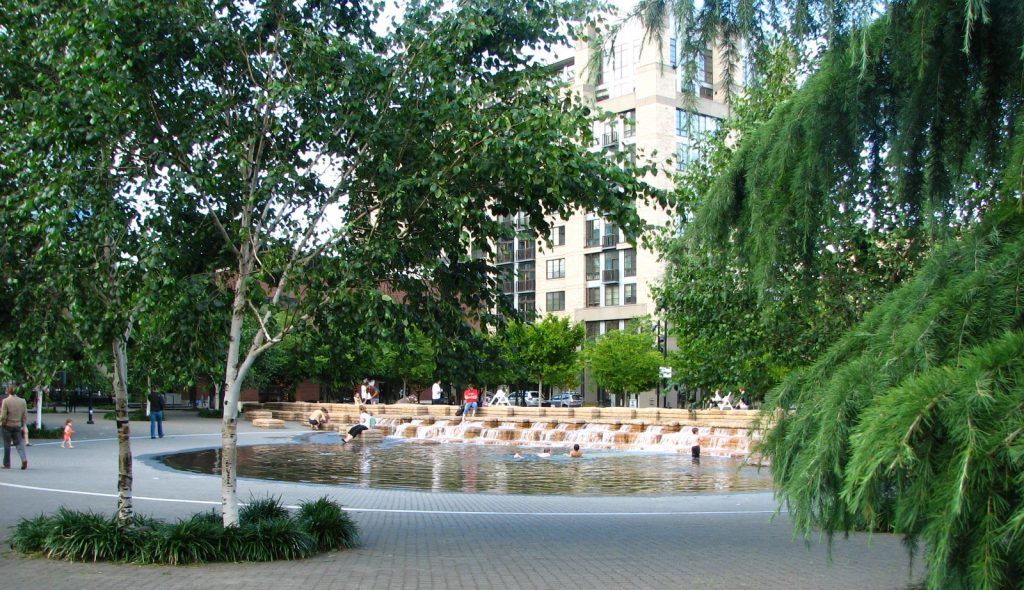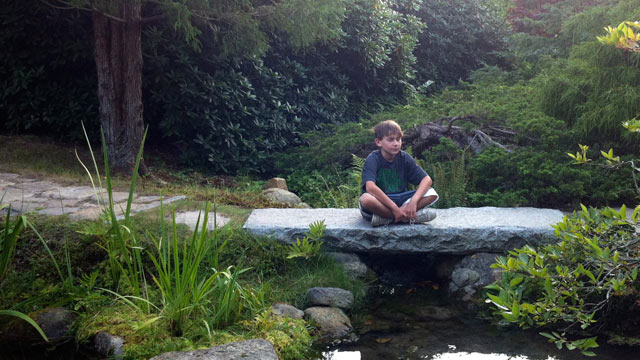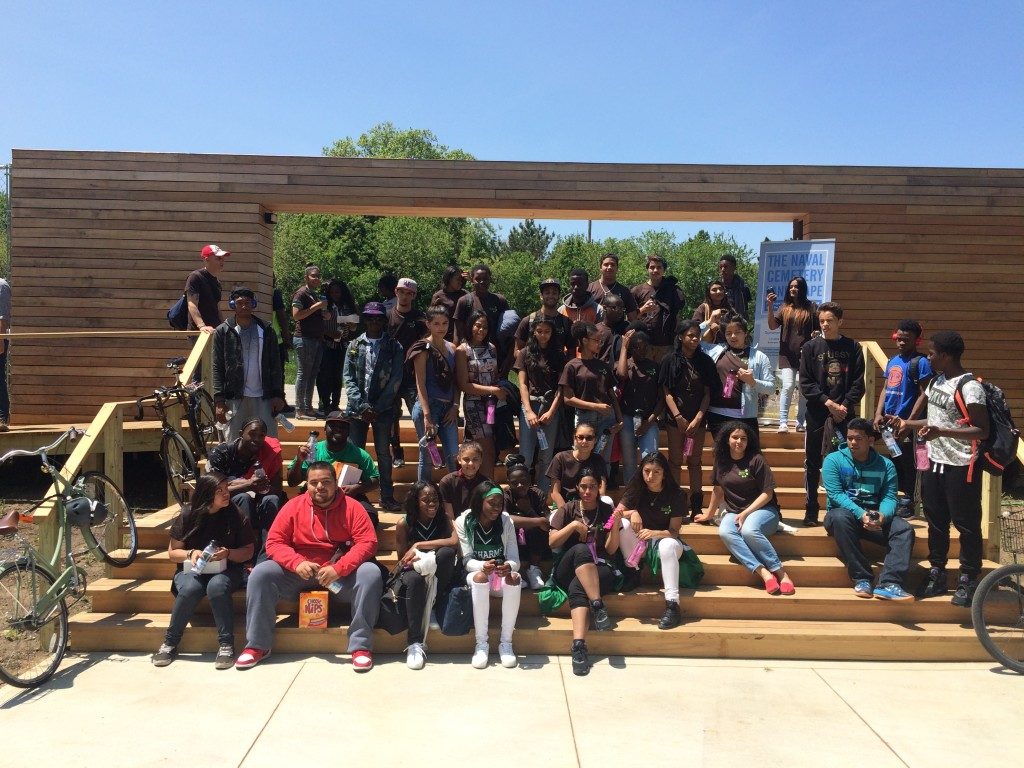“Play is something done for its own sake… It’s voluntary, it’s pleasurable, it offers a sense of engagement, it takes you out of time. And the act itself is more important than the outcome.” – Dr. Stuart Brown, National Institute for Play
Play comes in as many forms as there are people in a city. While we typically associate play with children, there are numerous ways adults bring play into their daily lives. Although there could be innumerable ways to classify play, or not classify at all, a framework helps us imagine the kinds of urban places where community inclusive play might occur. If we were to list forms of play, we might include:
– Children’s play
– Structured and Group Activities, including light activities like tai-chi and yoga
– Individual Athletics
– Informal/Unstructured Activities
– Passive Recreation
– Grass Roots/Ad Hoc Events
Where can play happen?
Parks are the most versatile form of public space when it comes to accommodating a host of activities. American cities have historically consigned play to parks and ignored potential for it to happen elsewhere. By treating play as a kind of exercise, we have missed opportunities to make it an integrated part of our daily lives. Blurring the boundary between streets and parks can make play more accessible and commonplace.
In cities, public spaces for play might include streets and rights of way, discarded industrial spaces, neighborhood and regional parks, small urban plazas and pocket arks, or special built facilities. Nature Sacred promotes the use and value of moments of respite and rejuvenation in nearby nature spaces. With this focus in mind, let us consider small urban spaces where a variety of play and experience could occur.

Neighborhood Parks
Parks come in a range of sizes and configurations, from neighborhood parks to large-scale regional parks. Neighborhood parks are usually found in residential areas, either single or multi-family. They are typically at least an acre in size, roughly the area of a small city block. In most American cities, they tend to serve as a neighborhood catchment areas of about one square mile or less. Regional parks occur much less frequently and are much larger in scale. In many communities, they include substantial amounts of wild land including forests, streams and ponds, and host native plants and animals. They are usually many acres: Forest Park in Portland is about 5,200 acres, Los Angeles’ Griffith Park is about 3,000 acres, Seattle’s Seward Park and Discovery Park are 300 and 1,100 acres, respectively. New York’s Central Park is 843 acres. Within these large spaces, smaller spaces for subgroups or special activities are common.
Small urban places can be great gathering spots for people of all ages.
Pocket parks and small urban plazas are typically spaces of about 5,000 square feet or smaller. The success of such locations as play spaces is based more on quality of function than the size of the space. Careful observation of human behavior in the public realm has given landscape architects a few simple rules that make all the difference between places that people want to be in and places that people avoid. People love to be near other people, and parks and plazas that give them the opportunity to congregate without being too prescriptive tend to succeed if they provide plenty of seating opportunities, a mixture of sun and shade, amenities like water features, visibility from the street and access to food and other services.
Small Urban Plazas
Small urban plazas are usually found in dense areas like downtowns or neighborhood shopping districts. They are typically hardscaped, though many have trees and other natural elements. These plazas often functions as an extension of the public sidewalk, a wider space where the stream of pedestrians forms an eddy and people can relax and take a break from their travels. Such plazas can be places of unexpected delight.
Pocket Parks
Pocket Parks are small parks and landscaped places, typically about the size of one or two single-family home lots. They are often landscaped with a lot of vegetation or are primarily pavement and tables. Some have other pedestrian features like walkways and benches. These parks are often the result of leftover space on a block and are often found in residential neighborhoods. Their small size gives them their name and distinguishes them from ordinary neighborhood parks. Vacant lots in neighborhoods are opportunities for creating new park space at relatively low cost.

Play is for all People
Play is an activity for all ages. A vibrant public realm that features ample opportunities for play attracts and retains workers. When those workers decide to start families, a city that is child friendly will be less likely to lose them to suburban migration. Playgrounds for children have become a fixture of public parks in America since the beginning of the twentieth century. Accommodating play activities for children is the most literal form of urban play, and its importance cannot be overemphasized. Conversely, young urban dwellers are delaying family formation, and many want public spaces for their friend-based social groups and community engagement activities. Play in all its forms should be encouraged.

Encouraging Play in Community Parks
A general list of children’s play zones can be grouped by noisiness of play, kinds of play activities, ages of those playing, and kinds of play groups. Consider this list with adults in mind. What public areas in your city have these types of zones? Are they typically for children, adults or seniors?
Quiet Zones do not necessarily mean silence. These public play spaces can encourage all ages and abilities to walk, move with purpose, stay still, or observe the world in the moment. These could be transitional zones, like personal property abutting public spaces. Areas with wading pools or public fountains encourage small children to play or couples to rest and watch the flow. Zones with sand or earth elements encourage fine motor skill play in children or places for adults to picnic on the grass. Contemplative zones with benches and observation decks encourage stillness or citizen science projects.
Traditional Service Zones support group and intergenerational activities. Areas with picnic tables, trashcans, and bathroom facilities allow older family members to join at their level and desire.
Intermediate Zones are those in-between, hardscaped areas we take for granted. Spaces for sidewalk games (chalk) and street-size board games (large chess) are proven attractions.
And of course, Noisy Zones are those areas that encourage the most physical activity. This may include natural zones with trees, vegetation and well-developed urban park trails. Playground design could include basketball courts, big loose wood pieces for construction, typical play structures for climbing and sliding.
Seattle’s Children’s PlayGarden is a wonderful example of a mixed-zone for children of all levels of ability.
http://www.childrensplaygarden.org/about-story%20https://www.youtube.com/watch?v=L_aclk5ropM
